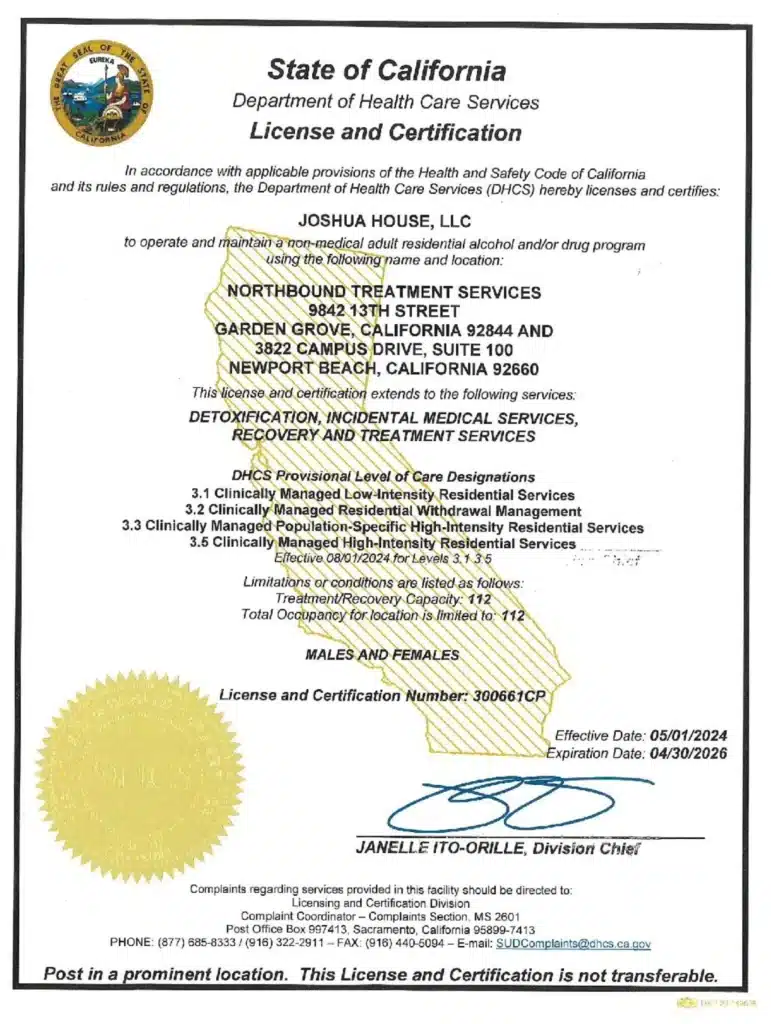Meth addiction affects millions of people. Use of it often starts at a young age. Research has shown nearly a million people, ages 12 and older, reported a methamphetamine use disorder in 2017. This significantly led to health problems, failure to meet responsibilities at home, school, and work. Regardless of the numbers or ages, meth addiction is harmful to everyone it touches.
Part of the reason why the cycle of addiction continues is due to the painful cravings and side effects of meth abuse that occur when a person abstains for too long. Since the brain has adapted to the presence of meth in the communication pathway, when it’s taken away, it works hard to restore the normal balance. This withdrawal process takes several days, if not weeks or longer.
Signs of meth withdrawal are mostly psychological rather than the physical symptoms experienced during withdrawal of opioids or alcohol. Common meth addiction symptoms include depression, anxiety, irritability, an inability to concentrate, and paranoia. Due to these extreme conflicts in the mind, it can lead people to have suicidal thoughts. This in addition to the extreme cravings, for the highly addictive drug can feel nearly impossible to handle alone.
The initial signs of meth addiction withdrawal are at their most severe in the first 24-48 hours and start to diminish over time. However, chronic meth users may also experience visual and auditory hallucinations, delusions, and violent behavior. These psychotic symptoms may continue for months or possibly even years after a person has already detoxed from meth. Each person reacts differently to withdrawal based on their own history with meth abuse.
The dangers during this time are heightened when a person attempts to go through the withdrawal process alone. It’s an intense period that requires medical supervision to monitor stabilization and step in should there be an emergency reaction. By undergoing the detox process as part of a medically managed program at a rehabilitation center, there’s less of a chance of relapse. Then, after the withdrawal symptoms have slowed in frequency and intensity, the healing process through addiction treatment can truly begin.
Addiction is a disease that changes the structure and functioning of the brain. The normal pleasure chemicals the brain produces are interrupted by the effects of any drug. As a stimulant, people who use meth continually seek the high that it provides. This is short-lived, yet intense.
The continued, compulsive use creates a tolerance in the brain. It then requires more of the same to achieve the same feelings as before. Eventually, the brain becomes dependent, always seeking more. Addiction occurs when the person reaches a point where they may want to stop, but can’t. Or, doesn’t stop even if there are severe consequences that have occurred, either physical, emotional, or psychological.
Someone going through meth withdrawal is not able to function in their daily lives. It takes all the effort and focus to manage the symptoms and reach a place where the highly addictive drug has fully cleared the system and the body has restored itself to a stable place.
To prevent future drug abuse and addiction, a follow-up treatment plan that includes structured rehabilitation is important to maintain sober living.
Physical Signs of Meth Abuse
Experiencing signs of meth withdrawal is the number one sign that the body has become addicted to meth. There are plenty of signs of substance abuse that occur prior to this level of dependency. Short-term effects of meth abuse include:
- Decreased fatigue
- Decreased appetite
- Increased wakefulness and activity
- Rapid or irregular heartbeat
For the span of time the high from meth use lasts, a person feels like they’re on top of the world, as if anything and everything they do is productive and powerful. It’s like working in fast-forward, but without full control. The surge of dopamine that meth produces lasts for approximately six to 24 hours.
When the crash occurs, it can lead to aggressive, violent behavior or feelings of depression and lethargy. Continually reaching for that high is what causes tolerance to build up in the body, which can happen more quickly if the body is slow to metabolize the drug. Using increased amounts of meth in shorter bursts of time often leads to overdose. When a person overdoses, it’s damaging to the heart and brain. It can cause a stroke, heart attack, or coma.
It’s dangerous on all accounts, but for some, the buildup and cycle of addiction with meth can occur much quicker than others. It won’t have the exact same effect on everyone. It depends on the health, history of use, age, and gender of the person who’s using it.
How Meth Affects a Person Long-Term
The days of meth withdrawal are important as the first step toward recovery. However, the long-term effects of meth addiction may last or create disruptions for a long time, maybe even forever. These include:
- Reduced motor skills
- Memory loss
- Mood swings or disturbances
- Aggressive or violent behavior
- Increased distractibility
Meth also leads to physical effects, such as extreme weight loss and dental problems. These take time to treat and maintain as part of a healthy lifestyle. Some physical and mental changes may not be as apparent for someone experiencing meth addiction firsthand, nor would they want to admit to them. It’s clearer to close friends and family members who notice a sudden switch in behavior or a dramatic change in a person’s appearance.
Acknowledgment there’s a problem is a big step, but think of addiction as a master manipulator. It’s literally changing what your brain thinks and how it responds. It’s difficult and dangerous to go through the withdrawal process alone. There’s no telling how the body will respond or what kind of stress it will put on you. It’s best to receive the support of a medically managed detox treatment program.
Having a care team to provide care and monitoring around-the-clock is a vital part of meth addiction treatment. It can feel scary and frustrating not knowing the next step to take, only that meth is what makes everything feel good. That’s why detox is the necessary first step toward healing, but cannot treatment cannot stop at drug withdrawal alone. In order to prevent recurring addiction, it requires behavioral therapy as well.
Experiencing Meth Withdrawal Through a Detox Program
Meth withdrawal is intense and unpredictable. Trying to go through the process alone is unsafe. The present environment where addiction lives is a constant temptation during a time when drug cravings will be strong and accountability will be obsolete. The safety and security of a medically managed detox program allows for 24-hour supervision.
As a person goes through the different meth withdrawal symptoms, there is always a care team ready to step in as needed to minimize drug cravings, when possible, and provide support. There’s a greater chance of long-term addiction recovery when seeking the help of others versus trying to battle addiction alone.
Addiction takes over the ability to make good choices. It changes a person’s character and actions. It’s both a battle with the self and an environmental one that requires a third party to step in and assist. No one should have to go through withdrawal symptoms alone and there’s no need to when there’s help available.
What to Expect Post-Detox
After the signs and symptoms of meth withdrawal have subsided for the most part (for chronic users, these may last much longer), treatment begins with either residential rehab or intensive outpatient care. For those who have never gone through detox before, the recommendation is to start with rehab and graduate into outpatient care after several months.
Residential rehab lasts for approximately 90 days. It takes place in a calm and relaxing environment that’s suitable for healing and recovery. It’s an opportunity to get away from the noise and chaos of addiction and start the path toward independent sober living. To do that, there are several parts of therapy required to build a structure and path toward what that looks like.
Rehab includes a combination of individual and group counseling, activity focused on the mind and body through meditation and exercise, as well as outdoor experiences, and solo time. Setting a schedule in place helps to stabilize the mind further and get the body used to a healthier routine without drugs. After this process is complete and the assessment shows it’s time for the next step, that’s when outpatient care begins.
In some cases, those who have already received residential treatment in the past may need to detox and move directly to outpatient care. That is a decision discussed between the individual and their care team. Outpatient care is an intensive continuation of residential rehab. It has many of the same elements and additional therapies and programs designed to create independence in real-life to stay sober with confidence.
Following both phases of care, there are addiction support services that further provide guidance, focus, and intensive steps to improve your life and focus on your specific goals. This may include resuming schoolwork, securing a job, or reconnecting with family members or lost relationships.
No part of the treatment process is easy. Meth withdrawal symptoms define one of the intense parts and progressing through treatment may still have setbacks. Taking it day by day will continue the focus on what’s necessary for healing with forward movement and strength.
Sources:
- “What Are the Long-Term Effects of Methamphetamine Misuse? | National Institute on Drug Abuse.” Drugabuse.gov. N.p., n.d., https://www.drugabuse.gov/publications/research-reports/methamphetamine/what-are-long-term-effects-methamphetamine-misuse
- “The Meth Epidemic (full documentary) | FRONTLINE”. YouTube
Author
-

President, CEO & Founder at Northbound Treatment Network
Paul Alexander is the CEO, President & Founder of Northbound Treatment Network in Newport Beach, California. He believes wholeheartedly in transformational leadership, organizational health and effective, fully integrated substance use disorder and mental health treatment. With over 27 years of experience in behavioral healthcare, Paul has extensive knowledge of “in vivo” treatment modalities, clinical development, operations, strategy, marketing and financial planning. He has been widely recognized for his development of collegiate-based residential treatment programs for students in recovery and authored a research study at The University of California confirming this modality’s effectiveness.
Paul’s comprehensive professional experience, willingness to innovate, and emphasis on organizational health are vital factors in Northbound’s continued success. Paul received his Certified Addiction Treatment Specialist training at Saddleback College in Mission Viejo, CA, and was awarded Outstanding Alumni Service Award in 2002. Paul holds a Bachelor of Arts degree in Criminology, Law and Society, Summa Cum Laude, from University of California, Irvine, and a Juris Doctorate degree from Loyola Law School of Los Angeles. Paul currently serves on The National Association of Addiction Treatment Providers (NAATP) board. In addition, he serves on The Family Recovery Foundation board and The CarePossible board in Orange County; both organizations are committed to raising funds for family recovery and treatment for former military personnel. Paul is in recovery himself and lives in Orange County with his wife Silvana and his two young sons, Noah and Dean.







